#Transcendental Magic: Its Doctrine and Ritual
Explore tagged Tumblr posts
Text
“Weakness ever sympathizes with vice, because vice is a weakness which assumes the mask of strength. Madness holds reason in horror, and on all subjects it delights in the exaggerations of falsehood. The cause of all bewitchments, the poison of all philtres, the power of all sorcerers are there.”
Éliphas Lévi, Transcendental Magic: its Doctrine and Ritual
#eliphas levi#transcendental magic#Transcendental Magic: Its Doctrine and Ritual#literature#bibliophile#upload#quotes#literary#lit#occult#occultist#esoteric#magick#dogme et rituel de la haute magie#occultism#philosopher#philosophy#on horror#madness
45 notes
·
View notes
Text

Man is himself the creator of his heaven and hell, and there are no demons except our own follies. Minds chastised by truth are corrected by that chastisement, and dream no more of disturbing the world (Ritual, ch. xxii). (Eliphas Lévi, Transcendental Magic. Its Doctrine and Ritual; trsl. A. E. Waite, London, 1968 ‘One need not fear the devil, but rather the perverse tendencies in oneself!’ --Anonymous Meditations on the Tarot
Art: Claire Partington. The Card Game Credit: Visio Smaragdina
61 notes
·
View notes
Text

“Like all magical mysteries, the secrets of the Great Work have a triple meaning: they are religious, philosophical and natural. Philosophical gold in religion is the Absolute and Supreme Reason; in philosophy, it is truth; in visible nature, it is the sun: in the subterranean and mineral world, it is the purest and most perfect gold. Hence the search after the Great Work is called the Search for the Absolute, and this work itself is termed the operation of the sun.” ― Éliphas Lévi, Transcendental Magic: Its Doctrine and Ritual
Eye in the Triangle Dale Keogh
Eliphas Levi: The Triangle of Solomon
The perfect word is the triad, because it supposes an intelligent principle, a speaking principle and a principle spoken. The Absolute, revealed by speech, endows this speech with a sense equivalent to itself, and in the understanding thereof creates its third self. So also the sun manifests by its light and proves or makes his manifestation efficacious by heat.
The triad is delineated in space by the heavenly zenith, the infinite height, connected with East and West by two straight diverging lines. With this visible triangle reason compares another which is invisible, but is assumed to be equal in dimension; the abyss is its apex and its reversed base is parallel to the horizontal line stretching from East to West. These two triangles, combined in a single figure, which is the six-pointed star, form the sacred symbol of Solomon’s Seal, the resplendent Star of the Macrocosm. The notion of the Infinite and the Absolute is expressed by this sign, which is the grand pantacle – that is to say, the most simple and complete abridgement of the science of all things.
Grammar itself attributes three persons to the verb. The first is that which speaks, the second that which is spoken to, and the third the object. In creating, the Infinite Prince speaks to Himself of Himself. Such is the explanation of the triad and the origin of the dogma of Trinity. The magical dogma is also one in three and three in one. That which is above is like or equal to that which is below. Thus, two things which resemble one another and the word which signifies their resemblance make three. The triad is the universal dogma. In Magic – principle, realization, adaptation; in Alchemy – azoth, incorporation, transmutation; in theology – God, incarnation, redemption; in the human soul – thought, love and action.
There are three intelligible worlds which correspond one with another by hierarchic analogy; the natural or physical, the spiritual or metaphysical, and the divine or religious worlds. From this principle follows the hierarchy of spirits, divided into three orders, and again subdivided by the triad in each of these.
All these revelations are logical deductions from the first mathematical notions of being and number. Unity must multiply itself in order to become active. An indivisible, motionless and sterile principle would be unity dead and incomprehensible. Were God only one He would never be Creator or Father. Were He two there would be antagonism or division in the infinite, which would mean the division also or death of all possible things. He is therefore three for the creation by Himself and in His image of the infinite multitude of beings and numbers. So is He truly one in Himself and triple in our conception, which also leads us to behold Him as triple in Himself and one in our intelligence. This is a mystery for the faithful and a logical necessity for the initiate into absolute and real sciences.
The Word manifested by life is realization or incarnation. The life of the Word accomplishing its cyclic movement is adaptation, or redemption. This triple dogma was known in all sanctuaries illuminated by the tradition of the Sages.
The primeval Sages, when seeking the First of Causes, behold good and evil in the world. They considered shadow and light; they compared winter with spring, age with youth, life with death, and their conclusion was this: The First Cause is beneficent and severe; It gives and takes away life. Then are there two contrary principles, the one good and the other evil, exclaimed the disciples of Manes. No, the two principles of universal equilibrium are not contrary, although contrasted in appearance, for a singular wisdom opposes one to another. Good is on the right, evil on the left; but the supreme excellence is above both, applying evil to the victory of good and good to the amendment of evil.
The principle of harmony is in unity, and it is this which imparts such power to the uneven number in Magic. Now, the most perfect of the odd numbers is three, because it is the trilogy of unity. In the trigrams of Fohi, the superior triad is composed of three YANG, or masculine figures, because nothing passive can be admitted into the idea of God, considered as the principle of production in the three worlds. For the same reason, the Christian Trinity by no means permits the personification of the mother, who is shown forth implicitly in that of the Son. Hence, in the trigrams of Fohi, the three inferior YIN correspond to the three superior YANG, for these trigrams constitute a pantacle like that of the two triangles of Solomon, but with a triadic interpretation of the six points of the blazing star.
Dogma is only divine inasmuch as it is truly human – that is to say, in so far as it sums up the highest reason of humanity. So also the Master, Whom we term the Man-God, called Himself the Son of Man. Revelation is the expression of belief accepted and formulated by universal reason in the human word, on which account it is said that the divinity is human and the humanity divine in the Man-God. Paracelsus and Agrippa did not set up altar against altar but bowed to the ruling religion of their time: to the elect of science, the things of science; to the faithful, the things of faith.
In his hymn to the royal Sun, the Emperor Julian gives a theory of the triad which is almost identical with that of the illuminated Swedenborg. The sun of the divine world is the infinite, spiritual and uncreated light, which is verbalized, so to speak, in the philosophical world, and becomes the fountain of souls and of truth: then it incorporates and becomes visible light in the sun of the third world, the central sun of our suns, of which the fixed stars are the ever-living sparks. The Kabalists compare the spirit to a substance which remains fluid in the divine medium and under the influence of the essential light, its exterior, however, becoming solidified, like wax when exposed to air, in the colder realm of reasoning or of visible forms. These shells, envelopes petrified or carnified, were such an expression possible, and the source of errors or of evil, which connects with the heaviness and hardness of animal envelopes. In the book Zohar, and in that of the Revolution of Souls, perverse spirits or evil demons are never called otherwise than shells – cortices. The cortices of the world or spirits are transparent, while those of the material world are opaque. Bodies are only temporary shells, whence souls have to be liberated; but those who in this life obey the flesh build up an interior body or fluidic shell, which, after death, becomes their prison-house and torment, until the time arrives when they succeed in dissolving it in the warmth of the divine light, towards which, however, the burden of their grossness hinders them from ascending. Indeed, they can do so only after infinite struggles, and by the mediation of the just, who stretch forth their hands towards them. During the whole period of the process they are devoured by the interior activity of the captive spirit, as in a burning furnace. Those who attain the pyre of expiation burn themselves thereon, like Hercules upon Mount Oetna, and so are delivered from their sufferings; but the courage of the majority fails before this ordeal, which seems to them a second death more appalling than the first, and so they remain in hell, which is rightly and actually eternal; but souls are never precipitated, nor even retained despite themselves therein.
The three worlds correspond together by means of the thirty-two paths of light, which are as steps of a sacred ladder. Every true thought corresponds to a Divine Grace in heaven and a good work on earth; every Grace of God manifests a truth, and produces one or many acts; reciprocally, every act affects a truth of falsehood in the heavens, a grace or a punishment. When a man pronounces the Tetragram – say the Kabalists – the nine celestial realms sustain a shock, and then all spirits cry out one upon another: ‘Who is it thus disturbing the kingdom of heaven?’ Then does the earth communicate unto the first sphere the sins of that rash being who takes the Eternal Name in vain, and the accusing word is transmitted from circle to circle, from star to star, and from hierarchy to hierarchy.
Every utterance possesses three senses, every act has a triple range, every form a triple idea, for the Absolute corresponds from world to world by its forms. Every determination of human will modifies Nature, concerns philosophy and is written in heaven. There are consequently two fatalities, one resulting from the Uncreated Will in harmony with its proper wisdom, the other from created wills in accordance with the necessity of secondary causes in their correspondence with the First Cause. There is hence nothing indifferent in life, and our seeming most simple resolutions do often determine an incalculable series of benefits or evils, above all in the affinities of our DIAPHANE with the Great Magical Agent, as we shall explain elsewhere.
The triad, being the fundamental principle of the whole Kabalah, or Sacred Tradition of our fathers, was necessarily the fundamental dogma of Christianity, the apparent dualism of which it explains by the intervention of a harmonious and all-powerful unity. So is the Apocalypse the book of the Gnosis or Secret Doctrine of the first Christians.
‘The sacred word MALKUTH substituted for KETHER, which is its kabalistic correspondent, and the equipoise of GEBURAH and CHESED, repeating itself in the circles of heavens called eons by the Gnostics, provided the keystone of the whole Christian Temple in the occult versicle.
MALKUTH, based upon GEBURAH and CHESED, is the Temple of Solomon having JAKIN and BOAZ for its Pillars; it is Adamite dogma, founded, for the one part on the resignation of Abel and, for the other, on the labours and self reproach of Cain; it is the equilibrium of being established on necessity and liberty, stability and motion; it is the demonstration of the universal lever sought in vain by Archimedes. A scholar whose talents were employed in the culture of obscurity, who died without seeking to be understood, resolved this supreme equation, discovered by him in the Kabalah, and was in dread of its source transpiring if he expressed himself more clearly. We have seen one of his disciples and admirers most indignant, perhaps in good faith, at the suggestion that his master was a Kabalist; but we can state notwithstanding, to the glory of the same learned man, that his researches have shortened appreciably our work on the occult sciences, and that the key of the transcendent Kabalah above all, indicated in the arcane versicle cited above, has been applied skillfully to an absolute reform of all sciences in the books of Hoene Wronski.
The secret virtue of the gospels is therefore contained in three words, and these three words have established three dogmas and three hierarchies. All science reposes upon three principles, as the syllogism upon three terms. There are also three distinct classes, or three original and natural ranks, among men, who are called to advance from the lower to the higher. The Jews term these three series or degrees in the progress of spirits, ASSIAH, YETZIRAH and BRIAH. The Gnostics, who were Christian Kabalists, called them HYLE, PSYCHE and GNOSIS; by the Jews the supreme circle was named ATZILUTH, and by the Gnostics PLEROMA. In the Tetragram, the triad, taken at the beginning of the word, expresses the divine copulation; taken at the end, it expressed the female and maternity.

Tetractys. The Tetractys (also known as the Decad) is an equilateral Triangle formed from the sequence of the first ten numbers aligned in four rows. It is both a Mathematical idea and a Metaphysical Symbol that embraces within itself - in Seedlike form - the Principles of the Natural World, the Harmony of the Cosmos, the Ascent to the Divine, and the Mysteries of the Divine Realm. So revered was this Ancient Symbol that it inspired Ancient Philosophers to swear by the name of the one who brought this gift to Humanity --Pythagoras.
43 notes
·
View notes
Text

“The astral light is projected by glance, by voice, and by the thumb and palm of the hand. Music is a potent auxiliary of the voice, and hence comes the word 'enchantment.'”
from Transcendental Magic: Its Doctrine and Ritual Alphonse Louis Constant
24 notes
·
View notes
Text
i've been reading about occultism so much lately. kind of on a new hyperfixation kick. reading transcendental magic, its doctrine and ritual by eliphas levi currently. can't help but think about how sam would be into this though
4 notes
·
View notes
Text

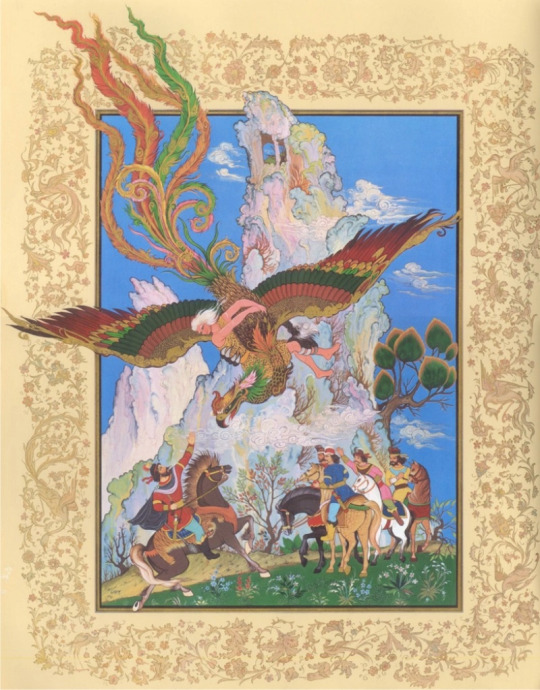
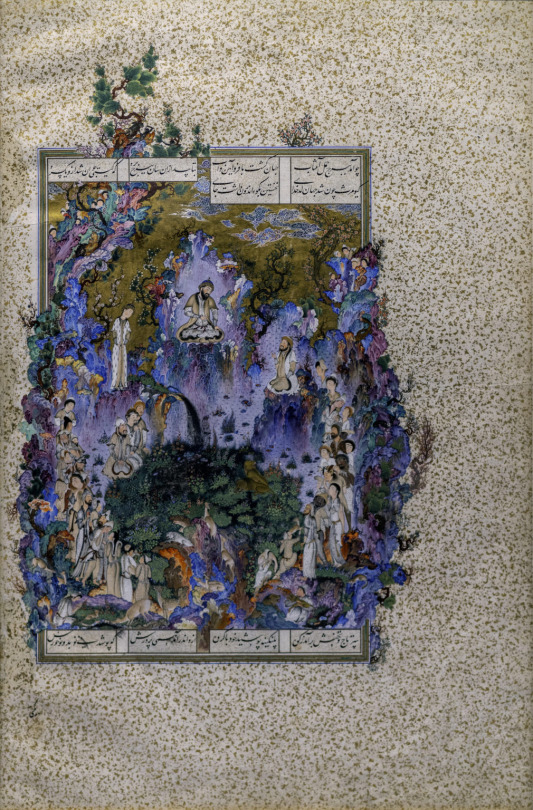
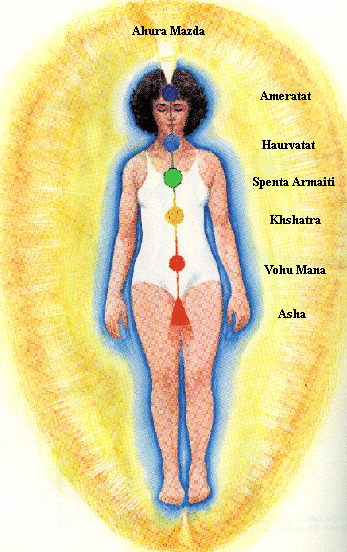
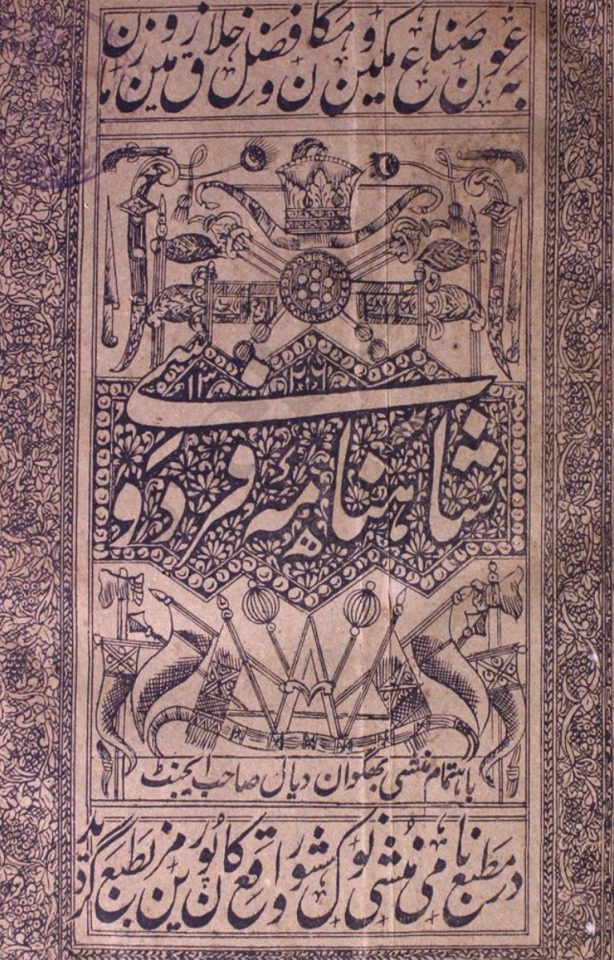
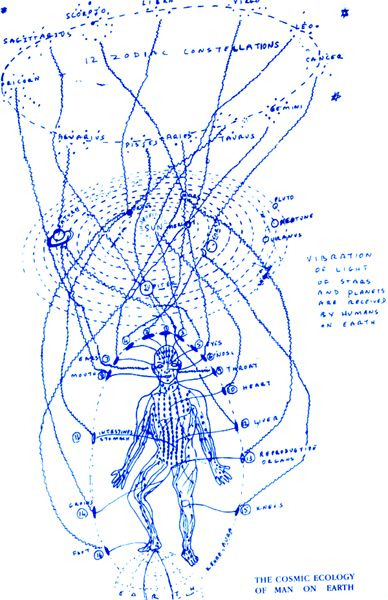
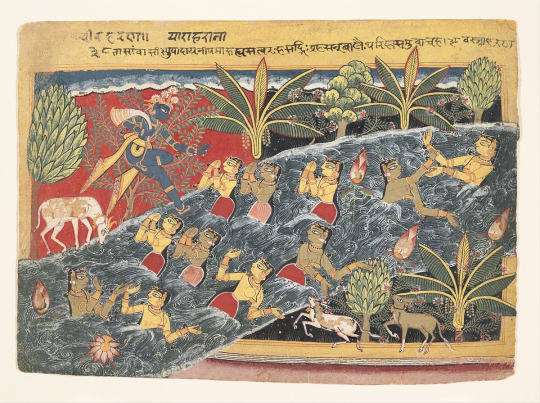

text from Pir Zia Inayat Khan's essay Persian & Indian Visions of the Living Earth in book Spiritual Ecology: Cry of the Earth
photos: Portrait of Shaikh Mu’in al-Din Hasan Chishti / The magical bird Simorgh / Shahnama / Amesha Spentas & Chakras / Shahnama cover Ferdowsi / Bhagavata Purana / Hazrat Inayat Khan
Ideas do not occur in a vacuum, and spiritual ideas are no exception. Sacred visions emerge from the disposition of human personalities, from the shape of historical events, and from the momentum of hallowed customs, but perhaps most fundamentally (transcendental sources aside), they emerge from “airs, waters, and places,” from the character of the landscapes in which they are born.
When epiphanies are redacted and passed down, the loamy pungency of their genesis frequently fades away, so that an abstract doctrine is perpetuated in place of an embodied insight. Such, however, is not always the case. Spiritual traditions are often the deepest repositories of a culture’s knowledge of the ancient bond between person and planet, soul and soil.
[...] The forces of light will thus gain ground, advancing in ascendancy, dispelling malevolence, and speeding the long-awaited day known as the frashkart, when the whole of creation is to be purified, redeemed, illuminated, and rendered immortal.
[...] All that exists is of light, for light is existence itself, the very essence of apparency. God is the “Light of Lights,” and as light kindles light, creation proliferates as a cascade of illumination poured into the dark abyss of nonbeing. In this great chain of being, the angels are links, uniting the manifest world with the infinite brilliance that is its source.
[...] There follows a long, though not infinite, series of Intellects, each receiving light from the Light of Lights and its predecessors, and bequeathing light to its successors. By this causal chain the starry sky is lit up.
[...] Nothing exists on Earth without an underpinning in the world of pure light.
[...] In like fashion, Suhrawardi’s cosmology envisions a universe that is intensely alive and inherently sacred. All existence is the effusion, in pulsing waves, of the holy of holies, the Light of Lights. Transpiring in every clod, puddle, flaming wick, and fluttering breeze is an angelic presence, a sentient and radiant delegate of the cosmic order.
[...] The Qur’an begins, “Read in the name of your Lord” (96:1). What must be read are the ayat, the signs of God. The verses of scripture are signs, but so too are the verses inscribed ”on the horizons and in themselves” (41:53). The holy books of the prophets, Earth’s rapturous geography, and the interior landscapes of the human soul are all of a piece, all pages in a single book, the book in which God’s own story is told. This is a story without end, for, “If all the trees on Earth were pens and the ocean ink, with seven oceans behind it to add to its supply, yet the words of God would not be exhausted” (31:27).
[...] As widely different as were the theological views of Muslim Sufis and Hindu yogis, they had two spiritual perceptions fully in common: the vital livingness of the elements and the status of the human form as a microcosm encapsulating the breadth, depth, and range of the whole universe.
[...] The Vamana Purana sings, “Let all the great elements bless the dawning day: Earth with its smell, water with its taste, fire with its radiance, air with its touch, and sky with its sound.”
[...] Hindu acts of worship are traditionally preceded by bhutashuddhi, the ritual purification of the elements in the body and in the landscape. In this manner the inner and outer dimensions of the universe are brought into symmetry, and the human being is sanctified as an epitome of the surrounding totality. The human heart contains fire and air, sun and moon, lightning and stars, pronounces the Chandogya Upanishad.
The Chishti Sufis share this perception. In the Sum of Yoga attributed to Khwaja Mu’in al-Din Chishti, the entire cosmos is mapped onto the human form:
Know that by His power God Most High created the human body to contain all that He created in the universe: “We will show them Our signs in the horizons and in themselves, until they see …” (41:53). God created the twelve signs of the zodiac in the heavens and also in the human body. The head is Aries, the neck is Taurus, the hands are Gemini, the arms are Cancer, the chest is Leo, the intestine is Virgo, the navel is Libra, the phallus is Scorpio, the thighs are Sagittarius, the knees are Capricorn, the shanks are Aquarius, the soles of the feet are Pisces. The seven planets that revolve beneath the zodiac may be located thus: the heart is the Sun, the liver is Jupiter, the pulmonary artery is the Moon, the kidneys are Venus, the spleen is Saturn, the brain is Mercury, the gall bladder is Mars. God the Glorious and Most High made 360 days in the year, 360 revolutions in the zodiac, 360 mountains on the face of the Earth, 360 great rivers, and in the human body, 360 segments of bone (like the mountains), 360 arteries (like the rivers), 360 epidermal tissues (like the days of the year). The motion of the stomach is like the sea, hairs are like trees, parasites are like beasts of the jungle, the face is like a built-up city, and the skin is like the desert. The world has its four seasons, and these are also present in man: infancy is spring, youth is summer, quiescence is fall, and old age is winter. Thunder corresponds to the voice, lightning to laughter, rain to tears.
To bring microcosm and macrocosm into harmony, yogis and Sufis practiced, and still today practice, kriyas, or meditations, corresponding to the four elements. In his Secret of Love, the twentieth-century Chishti Sufi ‘Aziz Miyan describes the elemental kriyas in this manner: “Earth kriya: Meditate while incrementally burying the body in the ground, from feet to head. Water kriya: Meditate while sitting underwater, lying in the rain, or pouring water over the body. Fire kriya: Meditate before a fire, uniting first with the smoke and then with the flame. Air kriya: Meditate standing on a tree, hill, or roof, wearing a single cloth, facing the wind. Breathe in and out slowly and deeply, inducing the sensation of flight.”
[...] Hazrat Inayat Khan conceived of the Earth as an animate, and in some sense sentient, whole. He wrote, “If the planet on which we live had no intelligence it could not have intelligent beings on it.”9 If Earth possesses a kind of sentience, it follows that the planet may be susceptible to suffering, and Hazrat Inayat Khan made just such an assertion when he wrote, “My deep sigh rises above as a cry of the Earth, and an answer comes from within as a message.” The message of his talks and writings was a call to contemplate the moral and spiritual interconnectedness, and ultimate ontological unity, of all life.
[...] The sacred texts of Mazdaism, Hinduism, and Islam provide a profusion of illuminating perspectives on the nature of embodied existence. While there are undeniable differences in the worldviews communicated in these texts, certain key principles emerge as common understandings. Foremost among these is the insight that the manifest universe is a marvel of providential grace. Following on this is the perception that not only humans, animals, and plants, but all material forms partake of the pervasive light and power of creation, and bear recognition as spiritually alive. Further, the texts make clear the error of imagining human life as hovering autonomously above the natural world. Mystical contemplation of the human form conduces to the realization that the body is profoundly embedded within the wholeness of nature, a totality that each human physically and spiritually personifies. The Indo-Persian prophetic traditions agree: the Earth is alive, we live in and through her, and as we are in her keeping, so is she in ours.
4 notes
·
View notes
Text
"Disasters, revolutions, and volcanoes do not make love with the stars. The erotic revolutionary and volcanic deflagrations antagonize the heavens."
- Georges Bataille, The Solar Anus
A reversed pentagram, with two points projecting upwards, is a symbol of evil and attracts sinister forces because it overturns the proper order of things and demonstrates the triumph of matter over spirit. It is the goat of lust attacking the heavens with its horns, a sign execrated by initiates.
- Eliphas Levi, Transcendental Magic, Its Doctrine and Ritual
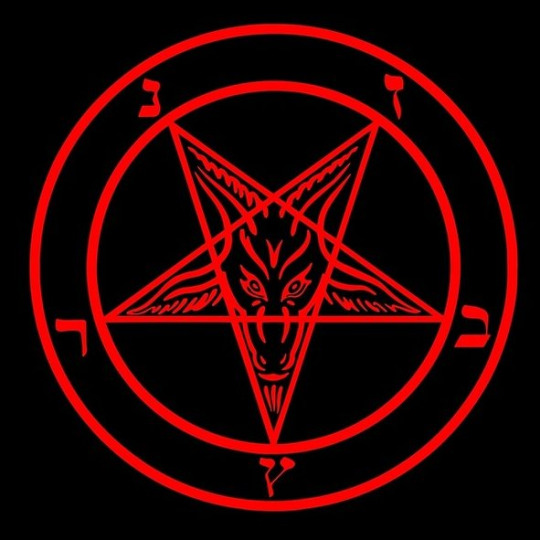
2 notes
·
View notes
Text
First off, I did not say that LaVey created the symbol, I said it was created FOR LaVey! Second, I know my Baphomet history! The 1st known mention of Baphomet was in a letter written in 1098 by Anselm of Ribemont describing the Siege of Antioch during the First Crusade. Anselm stated that the Turks "called loudly upon Baphomet." Fast forward to 1307 when Philip IV of France had every Templar in France arrested, accusing them of heretical idolatrous worship of a bearded male head called Baphomet! In his book Dogme et ritual de la haute magie (1861; Transcendental Magic: Its Doctrine and Ritual), the influential French Occultist Eliphas Levi created the Baphomet that has become a recognized occult icon! The books frontispiece was a drawing of Baphomet! Aleister Crowley also adopted Baphomet, for his " Gnostic Mass." And you know the rest! I just wanted to clarify Baphomet's back story! Satan be with you.
intro post, like if read

Keep reading
126 notes
·
View notes
Text
As Within, So Without.

"The pentagram signifies the domination of the mind over the elements and it is by this sign that we bind the demons of the air, the spirits of fire, the specters of water, and the ghosts of earth. Equipped with this sign, and suitably disposed, you may behold the infinite through the medium of that faculty which is like the soul's eye, and you will be ministered unto by legions of angels and hosts of fiends.
It is the star of the Magi, the burning star of the Gnostic schools, the sign of intellectual omnipotence and autocracy.
Its complete comprehension is the key of two worlds - it is absolute natural philosophy and natural science. Its use, however, is most dangerous to operators who do not completely and perfectly understand it...
All mysteries of magic, all symbols of the gnosis, all figures of occultism, all kabbalistic keys of prophecy, are resumed in the sign of the pentagram; which Paracelsus proclaims to be the greatest and most potent of all. It is indeed the sign of the absolute and universal synthesis."
- Eliphas Levi
Dogme et Rituel de la Haute Magie
1854
#pentagram#pentacle#eliphas levi#transcendental magic#magic its doctrine and ritual#Dogme et Rituel de la Haute Magie#ceremonial magic#transcendentalism#hermetic philosophy#hermetic symbolism#Hermeticism#hermetics#as above so below#principle of correspondence#macrocosm#microcosm#metaphysics#consciousness#awareness#conscious experience#fourth dimension#higher functions#meditation#existentialism#ascension#gnosis#altar#foliage#correspondence#The All
55 notes
·
View notes
Photo

Éliphas Lévi, Transcendental Magic, Its Doctrine and Ritual
423 notes
·
View notes
Text
“Everything lives by movement, everything is maintained by equilibrium, and harmony results from the analogy of contraries; this law is the form of forms.”
Éliphas Lévi, Transcendental Magic: its Doctrine and Ritual
#eliphas levi#transcendental magic#dogme et rituel de la haute magie#lit#literature#bibliophile#quotes#upload#literary#magick#magic#occult#occultist#occultism#philosopher#philosophy
35 notes
·
View notes
Text

Everything proves to us that there exist other intelligent beings than man. The Hierarchy of spirits must be infinite as that of bodies. The mysterious ladder of Jacob is the Biblical Symbol of this Hierarchy ascending and descending. God rests upon that ladder or rather he sustains it. We may say that that ladder is in him, or rather that it is He, Himself, for it is as a God, and to manifest God, that the Infinite ascends and descends.
At each rundle the Spirit which rises is equal to the one that descends, and can take his hand; but he still must needs follow him who ascends in front of him. This is a law which those who make evocations should seriously meditate.
To ascend eternally is the hope of the blessed; to descend eternally is the threat that weighs upon the reprobated.
Men invoke superior spirits, but they can only evoke inferior spirits.
Superior spirits whom men invoke attract them upwards; inferior spirits whom men evoke draw them downwards. MAGIC AND MAGISM “Everything is possible to him who wills only what is true! Rest in Nature, study, know, then dare; dare to will, dare to act and be silent!”
― Éliphas Lévi, Transcendental Magic: Its Doctrine and Ritual
Image: Alpha and Omega Art by Juan Reptor
10 notes
·
View notes
Text


Like all magical mysteries, the secrets of the Great Work have a triple meaning: they are religious, philosophical and natural. Philosophical gold in religion is the Absolute and Supreme Reason; in philosophy, it is truth; in visible nature, it is the sun: in the subterranean and mineral world, it is the purest and most perfect gold. Hence the search after the Great Work is called the Search for the Absolute, and this work itself is termed the operation of the sun.” ― Éliphas Lévi, Transcendental Magic: Its Doctrine and Ritual
Astral Baphomet 𖤐 Talon Abraxas
30 notes
·
View notes
Photo

Bowie was a voracious reader. In 2013, he posted a list of his top 100 favorite reads on his Facebook page.
Interviews With Francis Bacon by David Sylvester Billy Liar by Keith Waterhouse Room At The Top by John Braine On Having No Head by Douglass Harding Kafka Was The Rage by Anatole Broyard A Clockwork Orange by Anthony Burgess City Of Night by John Rechy The Brief Wondrous Life Of Oscar Wao by Junot Diaz Madame Bovary by Gustave Flaubert Iliad by Homer As I Lay Dying by William Faulkner Tadanori Yokoo by Tadanori Yokoo Berlin Alexanderplatz by Alfred Döblin Inside The Whale And Other Essays by George Orwell Mr. Norris Changes Trains by Christopher Isherwood Halls Dictionary Of Subjects And Symbols In Art by James A. Hall David Bomberg by Richard Cork Blast by Wyndham Lewis Passing by Nella Larson Beyond The Brillo Box by Arthur C. Danto The Origin Of Consciousness In The Breakdown Of The Bicameral Mind by Julian Jaynes In Bluebeard’s Castle by George Steiner Hawksmoor by Peter Ackroyd The Divided Self by R. D. Laing The Stranger by Albert Camus Infants Of The Spring by Wallace Thurman The Quest For Christa T by Christa Wolf The Songlines by Bruce Chatwin Nights At The Circus by Angela Carter The Master And Margarita by Mikhail Bulgakov The Prime Of Miss Jean Brodie by Muriel Spark Lolita by Vladimir Nabokov Herzog by Saul Bellow Puckoon by Spike Milligan Black Boy by Richard Wright The Great Gatsby by F. Scott Fitzgerald The Sailor Who Fell From Grace With The Sea by Yukio Mishima Darkness At Noon by Arthur Koestler The Waste Land by T.S. Elliot McTeague by Frank Norris Money by Martin Amis The Outsider by Colin Wilson Strange People by Frank Edwards English Journey by J.B. Priestley A Confederacy Of Dunces by John Kennedy Toole The Day Of The Locust by Nathanael West 1984 by George Orwell The Life And Times Of Little Richard by Charles White Awopbopaloobop Alopbamboom: The Golden Age of Rock by Nik Cohn Mystery Train by Greil Marcus Beano (comic, ’50s) Raw (comic, ’80s) White Noise by Don DeLillo Sweet Soul Music: Rhythm And Blues And The Southern Dream Of Freedom by Peter Guralnick Silence: Lectures And Writing by John Cage Writers At Work: The Paris Review Interviews edited by Malcolm Cowley The Sound Of The City: The Rise Of Rock And Roll by Charlie Gillete Octobriana And The Russian Underground by Peter Sadecky The Street by Ann Petry Wonder Boys by Michael Chabon Last Exit To Brooklyn By Hubert Selby, Jr. A People’s History Of The United States by Howard Zinn The Age Of American Unreason by Susan Jacoby Metropolitan Life by Fran Lebowitz The Coast Of Utopia by Tom Stoppard The Bridge by Hart Crane All The Emperor’s Horses by David Kidd Fingersmith by Sarah Waters Earthly Powers by Anthony Burgess The 42nd Parallel by John Dos Passos Tales Of Beatnik Glory by Ed Saunders The Bird Artist by Howard Norman Nowhere To Run The Story Of Soul Music by Gerri Hirshey Before The Deluge by Otto Friedrich Sexual Personae: Art And Decadence From Nefertiti To Emily Dickinson by Camille Paglia The American Way Of Death by Jessica Mitford In Cold Blood by Truman Capote Lady Chatterly’s Lover by D.H. Lawrence Teenage by Jon Savage Vile Bodies by Evelyn Waugh The Hidden Persuaders by Vance Packard The Fire Next Time by James Baldwin Viz (comic, early ’80s) Private Eye (satirical magazine, ’60s – ’80s) Selected Poems by Frank O’Hara The Trial Of Henry Kissinger by Christopher Hitchens Flaubert’s Parrot by Julian Barnes Maldoror by Comte de Lautréamont On The Road by Jack Kerouac Mr. Wilson’s Cabinet of Wonder by Lawrence Weschler Zanoni by Edward Bulwer-Lytton Transcendental Magic, Its Doctrine and Ritual by Eliphas Lévi The Gnostic Gospels by Elaine Pagels The Leopard by Giusseppe Di Lampedusa Inferno by Dante Alighieri A Grave For A Dolphin by Alberto Denti di Pirajno The Insult by Rupert Thomson In Between The Sheets by Ian McEwan A People’s Tragedy by Orlando Figes Journey Into The Whirlwind by Eugenia Ginzburg
222 notes
·
View notes
Text
Categories of Practical Magic
So most people would think of “categories of magic” as meaning something like divination vs. cursing vs. potion-making, or fictional/Otherworldly schools of study, or otherwise differentiating things by the purpose of the magic and the tools it utilizes. What we’re doing, though, is defining a few "types" of practical, physical-realm results-based magic based on where they derive their power from and what sorts of rules they tend to follow, as they all have different considerations for how they work, especially depending on where you're working magic in the multiverse. That bit may sound absurd to some, but it is the basis of Otherworldly Reconstructionism, and therefore deserves an explanation, and honestly if the absurdity seems to be too much you may wish to reconsider some of your stances on Nonhumanity and metaphysics as a whole.
For those of you who understand that truth, knowing and understanding the different categories of magic can be insights into and potential fixes for using magic in multiple places. Pattern-based magic can be exceedingly difficult to work on the astral and oftentimes cause trouble when attempting to find substitutions for plants, minerals, and substances not found in this world, for example, and spirit-based magic will fail if you try to send someone or something to run an errand for you in a place they have no access to. By analyzing your situation, your tools, your methods, and your goals with these categories in mind, you can achieve greater success and understanding in your workings.
All of these categories may overlap, and we're certain there are more types of practical magic, but in general, there are four categories of magic aimed at achieving some sort of material or short-term life goal based on how they work: pattern-based, archetypal-based, spirit-based, and resonance-based.
Pattern-based
This is the format of most spells with ingredients based in correspondence. These types of spells often rely on physical, chemical patterns and actions and sympathetic magic according to the planets, elements, concepts, etc. associated with both historical and here-and-now physical Earth life.
Pattern-based magic can seem anywhere from eclectic to rote and formulaic, but at its base it relies on patterns of correspondence or similarity between things, and many books of spells and magical ingredients are rooted in pattern-based magic such as this, usually drawing on the lore of specific traditions such as the Doctrine of Signatures. Author Raven Kaldera calls this type of magic "thaumaturgic", however that specific term technically refers to practical or "low" folk magic aimed at getting results and improving circumstances. Pattern-based magic can still cause change on nonphysical levels and be used to achieve transcendental results.
This type of magic can actually cause problems and confusion when working a spell on a Nonhuman individual, as many do not have any sense of personal connection to their human body, appearance, or even chosen daily use-name, legally-backed or not. As a result, traditional taglocks may be useless unless modified or worked with unconventionally, and typical spell correspondences may as well be useless. (We’ll address these things in depth at another time.)
Archetypal-based
This is the realm of passed-down folk magic and the rituals and so-called superstitions that seem to have inherent power across time and space regardless of whatever reality, world, dimension, or whatever term you prefer from which that specific spell or ritual hails from. This can be due to historical usage building up an archetypal energy store, or that archetypal energy store existing elsewhere in the multiverse to be called upon, or some other unknown factor resulting in it becoming a more widely-accessible energy "program", so to speak.
Kaldera classifies this form of magic as "theurgic", however we ourselves, along with many others, use that term to denote works of magic that involve connecting and developing different parts of the self such as transcendental alchemy and invocation/evocation to achieve direct contact with other entities for reasons of self-progression and adopting traits of those entities.
Most Recon work will be at least partially archetypal-based magic, as it draws on Otherworldly archetypal patterns and energies that are pre-established and can be tapped into and potentially modified depending on where you are, and as such can have practical applications not aimed at personal betterment and ascension.
Spirit-based
Spirit-based magic is directly partnering with a spirit, deity, wight, ancestor, kami, egregore, oversoul, etc. to achieve results on any level that does not involve merging, possession, or emulation of said being. This sort of magic is the traditional reason behind the summoning of demons, imps, and familiars to perform tasks for the practitioner, ranging anywhere from ensuring a romantic/sexual partner is "delivered" to the mage, to hiding or revealing hidden treasure, or instructing the summoner in herbology or mechanical science. Asking a SoulBond or spirit companion to gather information for you is spirit-based magic! There's just a different set of agreements in place in those cases (that is, you already have an interpersonal relationship, working or not) when normally such things would involve propitiation, petition, and prayer, especially when approaching a new “business partner”.
Resonance-based
This is the most direct, but most tricky form of magic. It can be thought of as the basis for the other three types, as they all rely on resonance in some way, but with a modifier. This type of magic could be seen as a sort of "meta-magic", magic that transcends boundaries and awareness yet is inherent in all forms. Pattern-based magic seeks resonance through physical means. Archetypal-based achieves resonance through a storehouse or transmitter of magical energy. Spirit-based magic reaches resonance by using an intermediary. But all types ultimately aim for changing the energy of a person, place, thing, concept, scenario, etc. to a different goal energy, and resonance-based magic alters the resonance of something directly to achieve said goal. You seek to make that thing resonant with your goal, and to maintain that resonance long enough for it to become permanent, or at least fully manifested.
Maintenance of the resonance is often the hardest part, since nothing exists in a vacuum, and any energy by nature will move and alter things on some level by proximity. Whether that's the physical heat energy of water transferring to your body to raise your temperature on a material level, or the magical energy of your species transferring to your aura and energy signature to manifest unusual phenomena, there will always be contrary factors that redirect that energy, accidentally or intentionally.
Resonance-based magic is often the basis for pure energy work and astral magic, and can be difficult to learn and master for a whole host of reasons.
#My posts#philosophy of magic#otherworldly reconstructionism#basics#crypt's magic starter pack series
8 notes
·
View notes
Photo

David Bowie’s 100 Favourite Books:
Interviews With Francis Bacon by David Sylvester
Billy Liar by Keith Waterhouse
Room At The Top by John Braine
On Having No Head by Douglass Harding
Kafka Was The Rage by Anatole Broyard
A Clockwork Orange by Anthony Burgess
Of Night by John Rechy
The Brief Wondrous Life Of Oscar Wao by Junot Diaz
Madame Bovary by Gustave Flaubert
Iliad by Homer
As I Lay Dying by William Faulkner
Tadanori Yokoo by Tadanori Yokoo
Berlin Alexanderplatz by Alfred Döblin
Inside The Whale And Other Essays by George Orwell
Norris Changes Trains by Christopher Isherwood
Halls Dictionary Of Subjects And Symbols In Art by James A. Hall
David Bomberg by Richard Cork
Blast by Wyndham Lewis
Passing by Nella Larson
Beyond The Brillo Box by Arthur C. Danto
The Origin Of Consciousness In The Breakdown Of The Bicameral Mind by Julian Jaynes
In Bluebeard’s Castle by George Steiner
Hawksmoor by Peter Ackroyd
The Divided Self by R. D. Laing
The Stranger by Albert Camus
Infants Of The Spring by Wallace Thurman
The Quest For Christa T by Christa Wolf
The Songlines by Bruce Chatwin
Nights At The Circus by Angela Carter
The Master And Margarita by Mikhail Bulgakov
The Prime Of Miss Jean Brodie by Muriel Spark
Lolita by Vladimir Nabokov
Herzog by Saul Bellow
Puckoon by Spike Milligan
Black Boy by Richard Wright
The Great Gatsby by F. Scott Fitzgerald
The Sailor Who Fell From Grace With The Sea by Yukio Mishima
Darkness At Noon by Arthur Koestler
The Waste Land by T.S. Elliot
McTeague by Frank Norris
Money by Martin Amis
The Outsider by Colin Wilson
Strange People by Frank Edwards
English Journey by J.B. Priestley
A Confederacy Of Dunces by John Kennedy Toole
The Day Of The Locust by Nathanael West
1984 by George Orwell
The Life And Times Of Little Richard by Charles White
Awopbopaloobop Alopbamboom: The Golden Age of Rock by Nik Cohn
Mystery Train by Greil Marcus
Beano (comic, )
Raw (comic, ’80s)
White Noise by Don DeLillo
Sweet Soul Music: Rhythm And Blues And The Southern Dream Of Freedom by Peter Guralnick
Silence: Lectures And Writing by John Cage
Writers At Work: The Paris Review Interviews edited by Malcolm Cowley
The Sound Of The City: The Rise Of Rock And Roll by Charlie Gillette
Octobriana And The Russian Underground by Peter Sadecky
The Street by Ann Petry
Wonder Boys by Michael Chabon
Last Exit To Brooklyn by Hubert Selby, Jr.
A People’s History Of The United States by Howard Zinn
The Age Of American Unreason by Susan Jacoby
Metropolitan Life by Fran Lebowitz
The Coast Of Utopia by Tom Stoppard
The Bridge by Hart Crane
All The Emperor’s Horses by David Kidd
Fingersmith by Sarah Waters
Earthly Powers by Anthony Burgess
The 42nd Parallel by John Dos Passos
Tales Of Beatnik Glory by Ed Saunders
The Bird Artist by Howard Norman
Nowhere To Run The Story Of Soul Music by Gerri Hirshey
Before The Deluge by Otto Friedrich
Sexual Personae: Art And Decadence From Nefertiti To Emily Dickinson by Camille Paglia
The American Way Of Death by Jessica Mitford
In Cold Blood by Truman Capote
Lady Lover by D.H. Lawrence
Teenage by Jon Savage
Vile Bodies by Evelyn Waugh
The Hidden Persuaders by Vance Packard
The Fire Next Time by James Baldwin
Viz (comic, ’80s)
Private Eye (satirical magazine, – ’80s)
Selected Poems by Frank O’Hara
The Trial Of Henry Kissinger by Christopher Hitchens
Flaubert’s Parrot by Julian Barnes
Maldoror by Comte de Lautréamont
On The Road by Jack Kerouac
Wilson’s Cabinet of Wonder by Lawrence Weschler
Zanoni by Edward Bulwer-Lytton
Transcendental Magic, Its Doctrine and Ritual by Eliphas Lévi
The Gnostic Gospels by Elaine Pagels
The Leopard by Giuseppe Di Lampedusa
Inferno by Dante Alighieri
A Grave For A Dolphin by Alberto Denti di Pirajno
The Insult by Rupert Thomson
In Between The Sheets by Ian McEwan
A People’s Tragedy by Orlando Figes
Journey Into The Whirlwind by Eugenia Ginzburg
358 notes
·
View notes